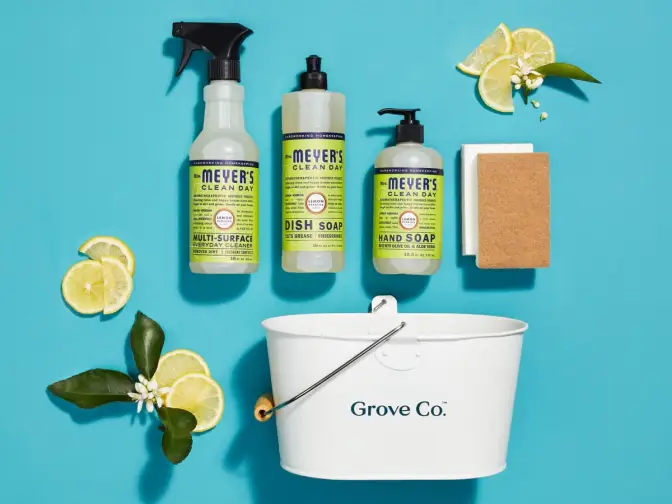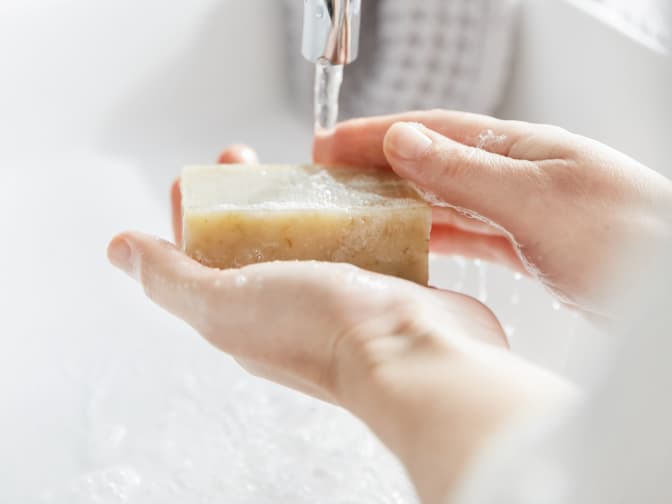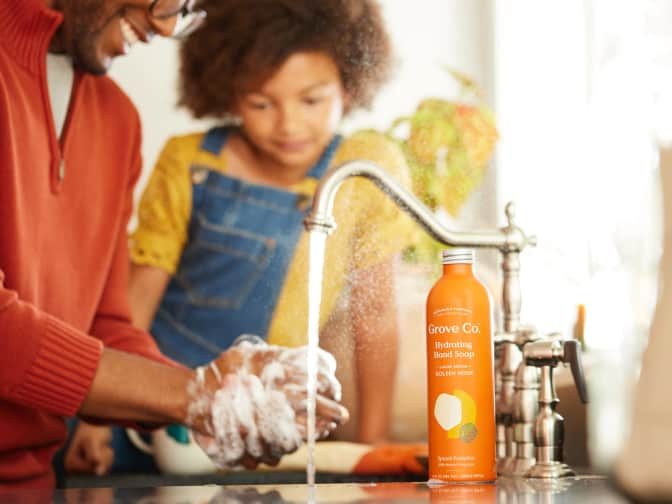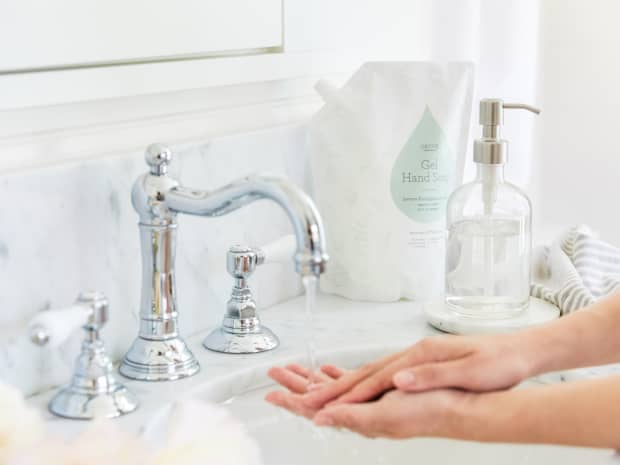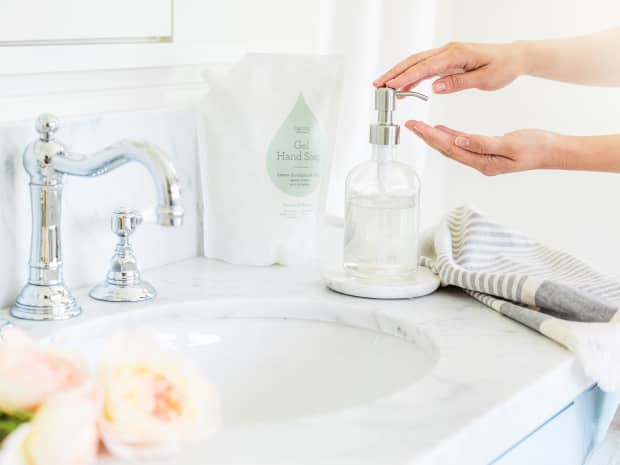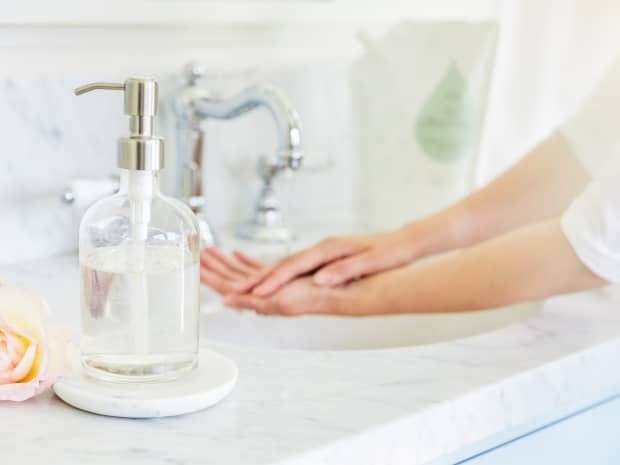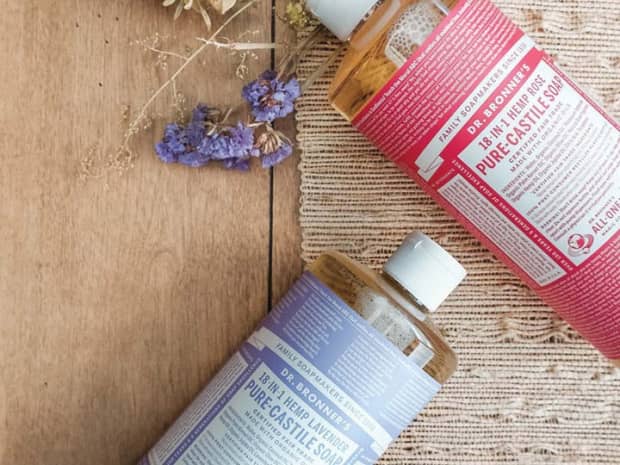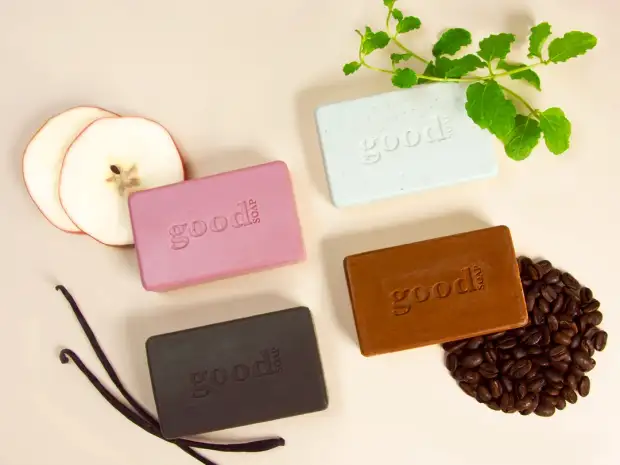Soap tablets, handwash powders, and natural foaming soap refills are more eco-friendly than liquid soap, since they’re usually packaged in paper or aluminum. Creating a foaming soap once dissolved, these powders and tablets are usually made of natural ingredients like sodium bicarbonate, aloe vera, citric acid, and essential oils.
You simply fill your reusable soap dispenser with water, drop in the tablet, and wait about a half hour for the tablet to dissolve.
For handwash powder, simply use the powder in place of traditional soap. Nontoxic hand soap tablet refills require less postage and packaging than liquid refills, since they’re small, lightweight, and compact.


